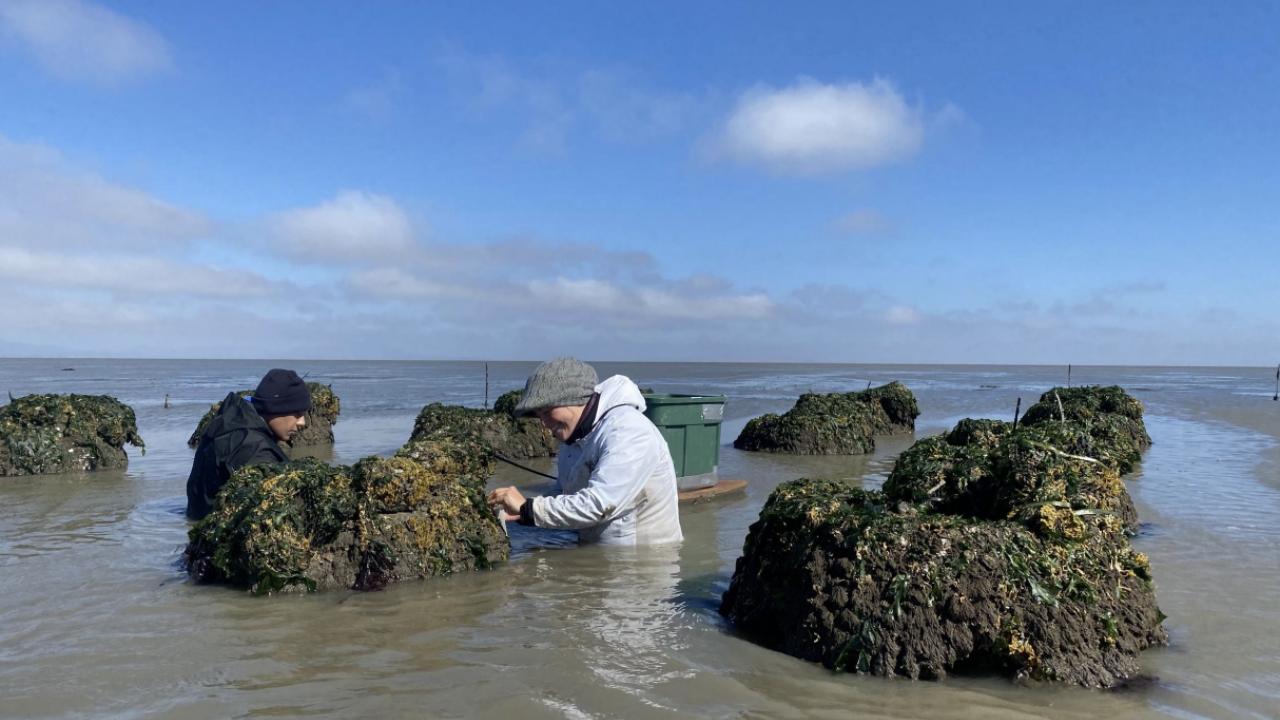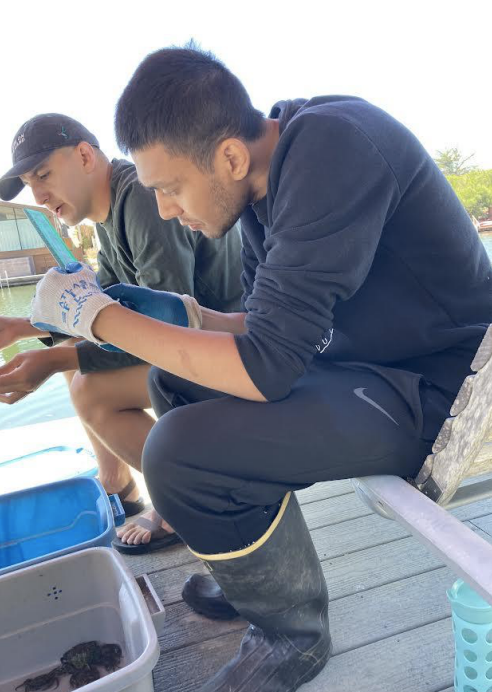
Field Work in Marine Biology
Sahil Prasad is in his final year at Santa Rosa Junior College majoring in Biology and intending to pursue a career in medicine.

This summer I had the opportunity of working with my mentor Angela Korabik on a variety of different projects.
The first project I worked on was oyster surveying at Point Pinole in Richmond. The purpose of this project was to examine if living shoreline restoration is possible by using oyster structures made of 80% sand and ground oyster shells mixed with cement to reduce marsh edge erosion, enhance populations of native species, and reduce wave energy. We took sample sizes using quadrats and recorded the number of each type of organism (including oysters, kelps, algae, Eel grass and Sea sponges) as well as the sizes of the oysters found.
The next project I helped work on was the surveying of the invasive European Green Crab at Seadrift Lagoon, a joint effort with the Smithsonian Environmental Research Center and the Greater Farallones association. European Green Crabs are invasive, so since 2009 the Greater Farallones Association has been attempting to remove them. However in removing the adults, which are known to be cannibalistic, they saw a large population boom. They knew removal would be next to impossible but management might work better. So they continue seeking to keep European Green Crabs at low levels to potentially create room in the ecosystem for native crabs to return. We collected data on gender, diameter, and any missing appendages, then we clipped the crabs’ spines (this is harmless to them) so at a future survey we would know if we had seen the same organisms from the year prior.
I am very grateful for this opportunity provided to me by the Santa Rosa Junior College and the UC Davis Bodega Marine Lab. I would like to extend a special thank you to my mentor, Angela Korabik, for working hard to connect me with the many field work opportunities available this summer which was exactly what I had asked for, “a summer of exploration and adventure”. This has been the single greatest learning opportunity in science that I have ever had and I will remember this experience for the rest of my life.
Want to learn more about the SRJC-BML Internship Program?
Visit the SRJC-BML Internship Program Website
You can also show your support for this program by making a gift.
